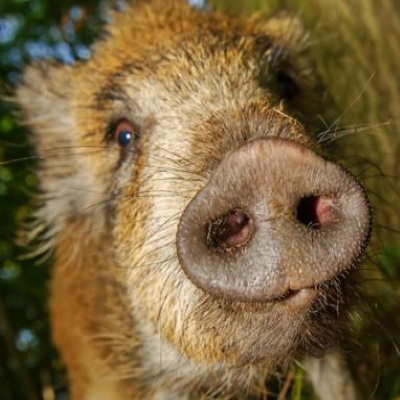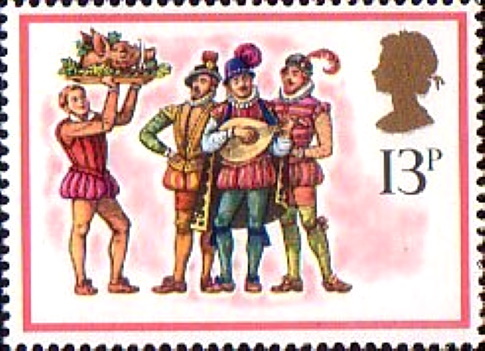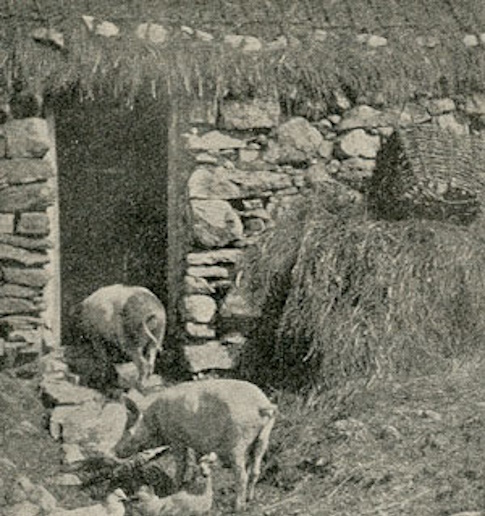17th December - Sow Day on the Orkneys
Written by Anne Newman 13th December 2019 updated 2023
Thanks to Orkrneyjar - Sow Day - slaughtering the sacred boar? for some of this information.
On 17th December, a day known locally as Sow Day, every family that kept swine would slaughter a sow for Yule.

In Scandinavian myth, Freyr possessed a magical gold boar named Gullinbursti (Golden Bristles). This creature was able to run as fast as any steed and glowed with a golden light that could drive away shadow and turn night into day. Pork is a traditional Yule dish in Norway - probably a reminder of the time when the boar, an animal sacred to Freyr, the Norse god of Yule and fertility, was sacrificed at Yule and it's flesh eaten as part of the feast. Freyr is related to Freya: the two are twin brother and sister. The boar represented the spirit of abundance and prosperity... It's sacrifice at the darkest time of the year was thought to help to ensure bountiful crops the following harvest.
It is also possible that the boar represented the sun. The solar attributes of this incredible beast, created by the dwarves Brokk and Eitri, are clear. The midwinter sacrifice of a boar could also be seen to symbolise the death of the old sun, and the rebirth of the new.
The boar also had a role in the swearing of sacred oaths.
On Yule Eve, the best boar in the herd was brought into the hall where the assembled company laid their hands upon the animal and made their unbreakable oaths. Heard by the boar, these oaths were thought to go straight to the ears of Freyr himself. Once the oaths had been sworn, the boar was sacrificed in the name of Freyr and the feast of boar flesh began.

The most commonly recognised remnants of the sacred boar traditions once common at Yule has to be the serving of the boar's head at later Christmas feasts.
In Ireland :
Fat bacon was also a treat. A pig was killed or some was bought, before the feast. Schools Collection - Christmas in Mayo
Long ago Christmas was thought more of than at the present time
as money was not so plentiful as it is now when the Christmas cake and
puddings and whiskey was bought, and it was thought a lot of because
some of the houses could not have it only at that time.
Some houses used to kill a cow and others a pig or a sheep and
they used to give pieces around to the houses and the rest used to be
salted down. Christmas - Co. Cork
On the sixth of January (Epiphany) it is an old custom to boil a pig's head. This day is called "Lá an Cinn" Feasts of the Year - Co. Tipperary
One pig was killed every year in December or January. The pig selected for him use was never a young one. The young fat pigs were taken to the market and a sow that may have reared several litters of bon hams was kept fattening from June to January - this was the local time required to "finish" a good pig - was killed to supply the meat for the year. It was no surprise to find some of these monsters six or seven cwt. dead weight. No two farmers would kill their pigs on the same or on succeeding days. The greater part of the lean pork was cut off the carcase and the "griscins" - as this lean was called - was divided among neighbours or friends. To neglect this was considered a "slight" or insult and no "coreing" or assistance was received from the members of the neglected household at rick making, turf drowing or cutting, or any "meyceal" after this affront. The curing of the bacon meant a real good "night."
Photo from - Maggie Blanck - Mayo Pages - The Peasants' Ireland, By Clifton Johnson, Outlook 1897

A "drop" was always available for the pig killer and the salters. Before being packed into the barrel or 'stan' each piece had the initials of him who salted it cut in the skin so that if any taint came on the meat subsequently the blame could be properly placed. As each piece was placed in the "stan" layers of salt were laid and packed tightly with a spade handle. Salting finished the mistress had a couple of large bastables of the pork roasted and salters and visitors feasted. The fiddle or concertina then put boys and girls on the floor for eight hand reels or the hi-col-cap till midnight.
Nobody but a miser or "screw" would have salting on Friday, and wherever it happened, the salter saw to it that something was introduced into the "stan" to contaminate the meat. (Generally a little milk was slipped into the barrel and this never failed to rot whatever piece it got in touch with) After three or four weeks the meat was taken out of the salt and hung on the "cross-stick" where it browned and got so rich that, when boiled, it became quite transparent. This was used for Sunday's dinner boiled with cabbage or turnips (in Spring). And it was not till seventy years ago that bacon was boiled twice weekly except on "merjceal" days. Duchas - Co. Limerick





